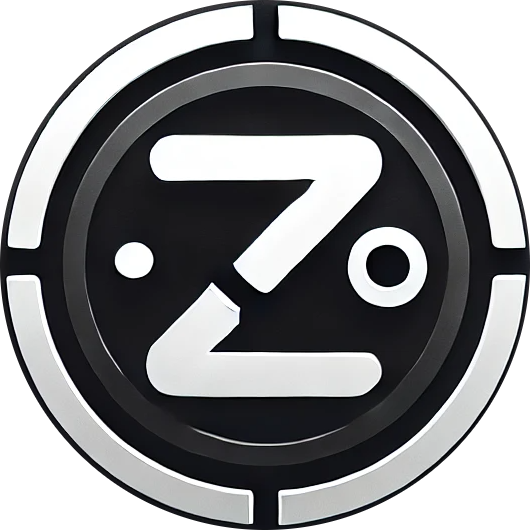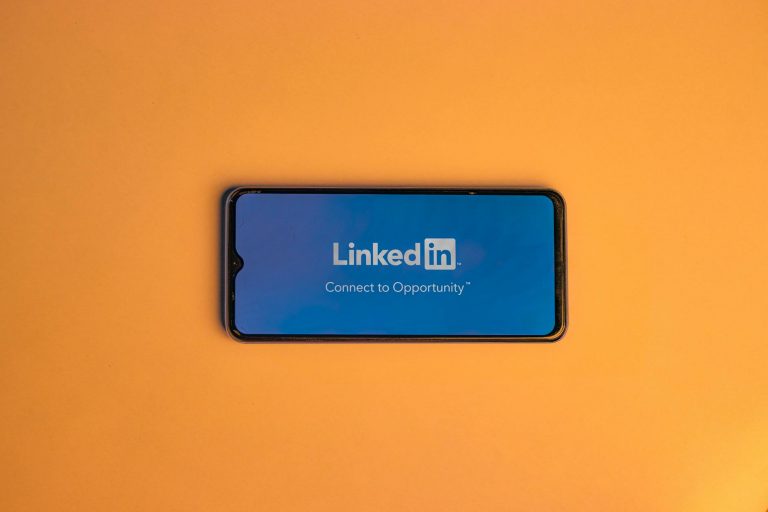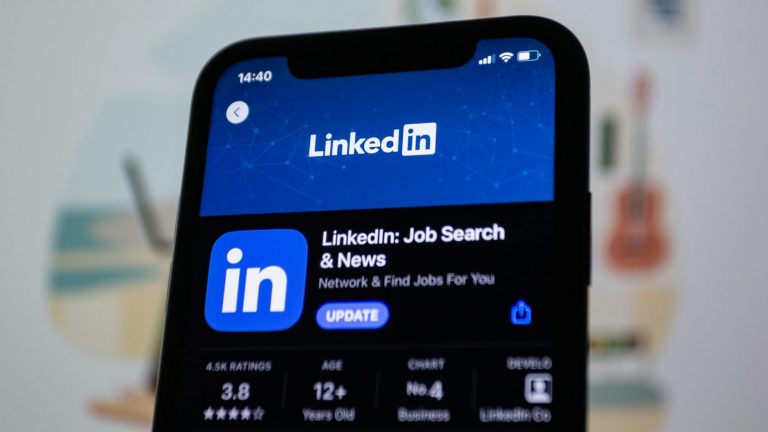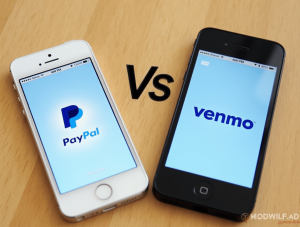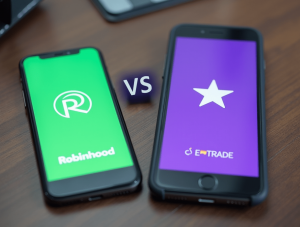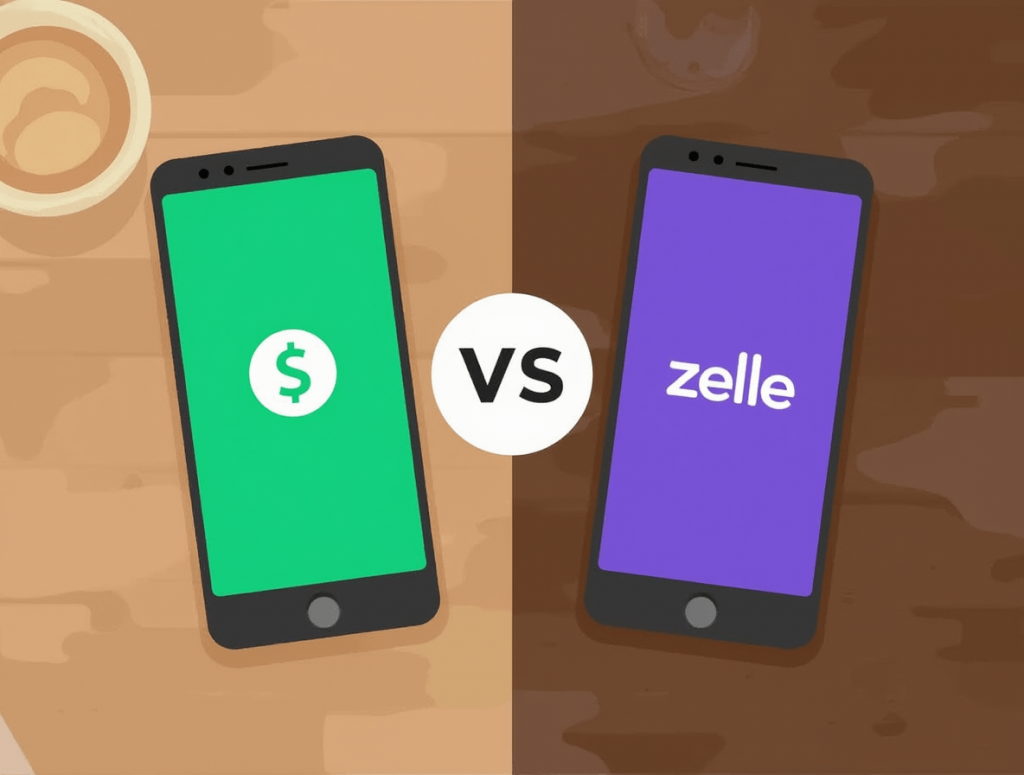
Which is the Best for Instant Transfers?
The Need for Speed in Digital Payments
In today’s fast-paced world, waiting days for money to move between accounts is increasingly unacceptable. Whether you’re paying rent at the last minute, splitting a dinner bill, or sending emergency funds to a family member, the ability to transfer money instantly has become essential. Cash App and Zelle have emerged as two leading solutions for rapid money movement, each offering near-immediate transfers but with distinctly different approaches and features.
Both services promise to solve the same fundamental problem—the need to move money quickly between individuals—but they differ significantly in their integration with traditional banking, fee structures, user experience, and additional features. As instant transfers become the expected standard rather than a premium service, understanding which platform better suits your specific needs can save you time, money, and potential frustration.
The Origins and Development of Instant Transfer Services
Cash App: Square’s Versatile Payment Solution
Cash App launched in 2013 (originally as “Square Cash”) as a peer-to-peer payment service developed by Square, Inc. (now Block, Inc.), the financial services company co-founded by Twitter creator Jack Dorsey. What began as a simple money transfer service has evolved into a multifunctional financial platform that includes banking services, stock investments, Bitcoin trading, and a debit card offering.
Cash App has cultivated a distinctive brand identity with its minimalist design and strong social media presence, particularly resonating with younger users. The app has grown from a basic P2P service to a more comprehensive financial tool with over 44 million monthly active users in the United States.
Zelle: The Banking Industry’s Collaborative Answer
Zelle was created in 2017 as the banking industry’s response to the growing popularity of third-party payment apps. Developed by Early Warning Services, LLC (a company owned by seven of America’s largest banks including Bank of America, JPMorgan Chase, and Wells Fargo), Zelle was designed to integrate directly with existing bank accounts and infrastructure.
Rather than positioning itself as a standalone financial platform, Zelle functions as a service embedded within banking apps or available through its own app when connected to a bank account. This approach leverages the existing trust and security frameworks of established financial institutions while providing the speed modern consumers demand.
Core Features Comparison
Understanding the key features of each platform provides crucial context for evaluating which might better serve your instant transfer needs.
Cash App Features
Cash App offers a versatile ecosystem of financial services:
- Instant and Standard Transfers: Options for immediate or next-day deposits to bank accounts
- Cash App Balance: Maintain funds within the app for immediate use
- Cash Card: Physical debit card linked to your Cash App balance
- Direct Deposit: Receive paychecks up to two days early
- Stock Investing: Buy fractional shares with as little as $1
- Bitcoin Trading: Buy, sell, and withdraw cryptocurrency
- Cash Boost: Instant discounts at select merchants when using Cash Card
- Paper Money Deposits: Add cash through participating retailers
- Tax Filing Services: Through integration with Cash App Taxes
- Family Accounts: For teenagers (with parental oversight)
Cash App has evolved into a more comprehensive financial platform, moving beyond simple transfers to offer broader money management tools.
Zelle Features
Zelle focuses primarily on fast, bank-integrated transfers:
- Instant Bank Transfers: Money moves directly between bank accounts
- Bank Integration: Works within existing bank apps or as standalone app
- Email and Phone Number Transfers: Send money using recipient contact info
- Split Function: Divide expenses among multiple people
- Business Payments: Features for small business transactions
- Scheduled Transfers: Set up recurring payments
- Gift Occasions: Send money with special messages for birthdays or other events
- Request Money: Ask others to send you specific amounts
- Group Transfers: Send to multiple recipients simultaneously
- Transaction Limits: Determined by your bank’s policies
Zelle maintains a more focused approach centered on fast, secure transfers between bank accounts rather than creating a separate financial ecosystem.
Speed of Transfers: How “Instant” Are They?
The core promise of both services is speed, but important differences exist in how quickly money becomes available to recipients.
Cash App Transfer Speed
Cash App offers tiered transfer options:
- Standard Transfers: Free transfers typically arrive in 1-3 business days
- Instant Transfers: Funds available in recipient’s bank account within minutes (for a fee)
- Cash App to Cash App: Transfers between Cash App users are immediate with no fees
- Cash Card Transactions: Immediate access to Cash App balance for purchases
- Processing Times: Transfers initiated after business hours may face slight delays
- Verification Delays: New accounts may experience longer transfer times during initial use
The key distinction is that while transfers between Cash App users happen instantly, moving money to a bank account either takes 1-3 days (free) or requires paying a fee for instant access.
Zelle Transfer Speed
Zelle operates on a different model:
- Typical Transfer Speed: Funds usually available within minutes when both users are enrolled
- First-Time Recipients: May experience a 1-3 day delay if not yet registered with Zelle
- Bank Processing: No distinction between “standard” and “instant” transfers—all transfers aim to be immediate
- Weekend and Holiday Transfers: May face minor delays during non-business hours
- No Fee for Speed: All transfers are designed to be fast without additional charges
- Bank-to-Bank Movement: Money moves directly between bank accounts without an intermediary balance
Zelle’s integration with the banking system enables it to offer consistently fast transfers without charging premium fees for speed.
Fee Structure Analysis
Understanding the cost implications of each service is crucial for determining their value for different types of transactions.
Cash App Fees
Cash App’s fee structure includes several potential charges:
- Standard Transfers: Free (1-3 business days)
- Instant Transfers: 0.5-1.75% fee (minimum $0.25) for immediate bank deposits
- Credit Card Payments: 3% fee for sending money using a credit card
- Bitcoin Transactions: Service fee plus variable spread on each transaction
- ATM Withdrawals: $2 fee per withdrawal (plus any ATM operator fees)
- Foreign Transactions: 3% fee for transactions in non-USD currencies
- Inactive Account Fee: None
- Monthly or Annual Maintenance Fees: None
The most relevant fee for instant transfers is the 0.5-1.75% charge for immediate deposits to bank accounts, which can add up with larger or frequent transfers.
Zelle Fees
Zelle keeps its fee structure extremely simple:
- Standard Transfer Fee: None
- Expedited Transfer Fee: None (all transfers aim to be fast)
- Bank Fees: Some banks may charge their own fees for Zelle usage (uncommon)
- Business Accounts: May have different fee structures depending on the bank
- Credit Card Usage: Not supported (transfers must come from bank accounts)
- International Transfers: Not supported
- Monthly or Annual Fees: None
- Inactive Account Fees: None
Zelle’s primary advantage is that its core service—fast transfers between bank accounts—comes without transfer fees from the Zelle service itself.
Security Measures and Fraud Protection
Both platforms have implemented security measures, but with different approaches reflecting their relationship to traditional banking systems.
Cash App Security Features
Cash App employs several security measures:
- Encryption: Data encryption for all transactions
- Fraud Detection: AI-based unusual activity monitoring
- PIN or Biometric Authentication: Required for transactions
- Security Locks: Options to lock the app remotely
- Notifications: Real-time alerts for account activity
- Two-Factor Authentication: Additional verification for certain actions
- Cash Card Controls: Ability to disable the card instantly
- Dispute Resolution: In-app support for unauthorized transactions
- FDIC Insurance: Cash App balances may receive FDIC insurance through partner banks
Despite these measures, Cash App places significant responsibility on users to ensure they’re sending money to the intended recipient, as transactions are generally irreversible.
Zelle Security Features
Zelle leverages banking security infrastructure:
- Bank-Level Security: Utilizes existing bank security frameworks
- Authentication: Multi-factor authentication through banking apps
- Transaction Monitoring: Advanced fraud detection systems
- Recipient Verification: Email or phone number validation
- Encryption: End-to-end encryption for transfers
- Session Timeouts: Automatic logouts after periods of inactivity
- Dispute Resolution: Bank-managed fraud investigation processes
- FDIC Insurance: Funds remain in FDIC-insured bank accounts
- Transaction Limits: Bank-imposed limits reduce fraud exposure
Zelle’s integration with established banking systems provides robust security, though like Cash App, it offers limited protection for authorized payments sent to scammers or incorrect recipients.
User Experience and Accessibility
The interface and user experience can significantly impact how convenient each service is for instant transfers.
Cash App User Experience
Cash App offers a distinctive, streamlined interface:
- Design Philosophy: Minimalist, modern design with intuitive navigation
- Setup Process: Requires creating a separate account and linking bank information
- User Interface: Simple, icon-based home screen with clear function access
- Social Components: Username-based “$Cashtag” system with social discovery
- Search Functionality: Find friends by name, $Cashtag, phone, or email
- Transaction History: Visual timeline of payment activity
- Customization: Personalized $Cashtag and profile
- Accessibility Features: Support for screen readers and other adaptive technologies
- Language Support: Primarily English with limited additional language options
Cash App’s interface prioritizes visual simplicity and quick access to core functions, appealing particularly to younger users comfortable with digital-first financial services.
Zelle User Experience
Zelle’s experience varies depending on how it’s accessed:
- Integration Experience: Seamless in-bank app experience when integrated
- Standalone App: More basic interface when used as separate application
- Setup Process: Uses existing bank credentials when accessed through banking apps
- User Interface: More traditional banking aesthetic and organization
- Contact Management: Emphasis on email and phone number identification
- Transaction History: Standard list format for past transfers
- Customization: Limited personalization options
- Accessibility Features: Often inherits bank apps’ accessibility compliance
- Language Support: Multiple languages based on bank app support
Zelle’s experience is generally more utilitarian and less focused on creating a distinct brand identity, instead emphasizing its role as a banking utility.
Integration with Banking Systems
How each service connects with traditional financial infrastructure significantly impacts its utility for different types of users.
Cash App Banking Integration
Cash App functions more as a parallel system to traditional banking:
- Connection Type: Links to external bank accounts and cards
- Account Relationship: Creates separate Cash App balance
- Banking Features: Offers routing and account numbers for direct deposits
- Transfer Mechanics: Moves money between Cash App and linked accounts
- Cash Card: Functions as a separate debit card linked to Cash App balance
- ATM Access: Available through Cash Card at ATMs
- Check Deposits: Mobile check capture available
- Interest Bearing: No interest earned on Cash App balances
- Statement Integration: Separate from bank statements
Cash App essentially creates a secondary financial account that connects to but remains distinct from traditional bank accounts.
Zelle Banking Integration
Zelle functions as an extension of the existing banking system:
- Connection Type: Direct integration with bank accounts
- Account Relationship: No separate balance—money stays in bank accounts
- Banking Features: Utilizes existing bank infrastructure
- Transfer Mechanics: Moves money directly between bank accounts
- Card Integration: No separate card—uses existing bank cards
- ATM Access: Through normal banking channels only
- Check Processing: Handled through regular banking features
- Interest Bearing: Money remains in interest-bearing accounts if applicable
- Statement Integration: Transactions appear on regular bank statements
Zelle’s deep integration with existing banking infrastructure means there’s no need to fund a separate account or manage multiple balances.
Transaction Limits and Restrictions
Understanding the limitations of each platform is crucial for users who need to move larger sums quickly.
Cash App Limits
Cash App imposes several types of limits:
- Sending Limit: Initially $250 within 7 days; can increase to $7,500 after verification
- Receiving Limit: Initially $1,000 within 30 days; can increase after verification
- Cash Card Spending: Up to $7,000 per day, $15,000 per month
- ATM Withdrawals: Up to $310 per transaction, $1,000 per 24 hours
- Bitcoin Purchase Limit: Varies by user, typically up to $10,000 per week
- Instant Deposit Limit: Up to $25,000 per deposit, $50,000 per day
- Identity Verification Requirement: Higher limits require SSN, DOB, and other personal information
- Geographic Restrictions: U.S. residents only (with some limitations)
Cash App’s tiered limit structure means new users face more significant restrictions until they complete additional verification steps.
Zelle Limits
Zelle’s limits are typically determined by partner banks:
- Daily Limits: Typically $1,000-$3,500 for consumers (varies by bank)
- Monthly Limits: Often $10,000-$20,000 (varies by bank)
- Business Account Limits: Generally higher than personal accounts
- First-Time Recipient Limits: May be lower for new transfer relationships
- Bank-Determined Controls: Your specific bank sets and can adjust limits
- Minimum Transfer Amount: Typically $5 minimum
- Transaction Frequency: Some banks limit the number of daily transactions
- Verification Requirements: Based on existing bank account verification
Zelle’s limit structure varies significantly depending on your banking relationship, with established customers of major banks often enjoying higher limits.
Additional Features Beyond Transfers
While instant transfers are the core function, additional features may influence which service better fits your broader financial needs.
Cash App Additional Features
Cash App has expanded to include numerous financial services:
- Investing: Fractional stock purchases with no commission fees
- Bitcoin Trading: Buy, sell, and transfer cryptocurrency
- Tax Services: Free tax filing through Cash App Taxes
- Cash Boost: Location-based discounts when using Cash Card
- Round-Ups: Automatic investment of spare change from purchases
- Banking Services: Direct deposit, routing numbers, statements
- Paper Money Services: Cash deposits at partner retailers
- Giveaways and Promotions: Regular cash prizes and promotional events
- Cash for Business: Tools for small business payments
These additional features position Cash App as a broader financial platform rather than simply a transfer service.
Zelle Additional Features
Zelle maintains a more focused approach:
- Group Payments: Split bills and request money from multiple people
- Recurring Payments: Schedule regular transfers
- Gift Themes: Add special messages for occasions
- Business Payments: Tools for accepting customer payments
- Activity Reports: Track and categorize payment history
- Notifications: Custom alerts for payment activity
- Contact Management: Organize frequent payment recipients
- Bank Rewards Integration: Sometimes integrates with bank reward programs
- International Remittance: Limited international functionality through specific banks
Zelle’s additional features generally remain centered around its core transfer functionality rather than expanding into broader financial services.
Best Use Cases: When to Choose Each Service
Different scenarios may call for different transfer solutions based on specific needs and priorities.
Ideal Scenarios for Cash App
Cash App tends to excel in these situations:
- Younger User Groups: When transferring money among tech-savvy individuals
- Unbanked or Underbanked Recipients: For those without traditional bank accounts
- Multiple Financial Needs: When users want investing, cryptocurrency, and banking in one app
- Brand Affinity: Users who appreciate the modern interface and brand identity
- Retail Purchases: When using Cash Card for in-store or online shopping
- Side Hustles: Small business owners who need simple payment acceptance
- Investment Interest: Users who want to invest small amounts in stocks or Bitcoin
- International Recipients: Limited international capabilities (more than Zelle)
- Frequent Small Transfers: Regular splitting of bills or small payments
Cash App is particularly strong for users seeking a more comprehensive financial platform beyond simple transfers.
Ideal Scenarios for Zelle
Zelle is typically the better choice in these circumstances:
- Transfers Between Bank Accounts: When both parties have U.S. bank accounts
- Larger Transfer Amounts: Often higher limits for established bank customers
- Fee Avoidance: When users want to avoid any transfer fees
- Banking Integration Priority: For those who prefer keeping all finances within banking ecosystem
- Older Demographics: Users more comfortable with traditional banking interfaces
- Reliability Concerns: When bank-level security and stability are top priorities
- Regular Bills and Payments: For consistent, recurring transfers
- Business Payments: Certain business transaction types
- Immediate Bank Account Access: When funds need to be available in the actual bank account immediately
- Privacy Preferences: Users who prefer not creating accounts with financial technology companies
Zelle’s strength lies in its seamless bank integration and fee-free instant transfers directly between accounts.
Privacy Considerations
How each service handles user data and transaction information presents important privacy distinctions.
Cash App Privacy Practices
Cash App’s approach to user data includes:
- Data Collection: Gathers extensive user data including transaction history, location, device information
- Social Features: Public profile with $Cashtag visible to other users
- Transaction Privacy: Activities can be kept private between parties
- Marketing Usage: Data may be used for targeted offers and promotions
- Third-Party Sharing: Information shared with service providers and within Block ecosystem
- Data Retention: Information retained according to financial regulations and company policy
- Account Visibility: Users can discover others on the platform
- Advertising Partners: Data may inform advertising across platforms
- Privacy Controls: Various opt-out options available in settings
Cash App’s broader feature set necessitates more extensive data collection and sharing practices.
Zelle Privacy Practices
Zelle’s privacy approach reflects its banking origins:
- Data Handling: Primarily governed by your bank’s existing privacy policies
- Limited Profile Information: Minimal publicly visible user data
- Transaction Privacy: Activities visible only to participating parties
- Bank Compliance: Subject to stringent banking data protection regulations
- Marketing Usage: Varies by bank but generally more restricted
- Third-Party Sharing: Typically limited to necessary service providers
- Data Retention: Follows banking record-keeping requirements
- Account Discovery: Limited to email/phone searches, no browsing
- Privacy Controls: Managed through bank privacy settings
Zelle’s banking industry roots generally result in more conservative data practices aligned with traditional financial institution standards.
Recent Developments and Future Outlook
Both platforms continue to evolve their instant transfer capabilities and broader service offerings.
Cash App Recent Innovations
Cash App has introduced several new features:
- Expanded Investment Options: Additional stock offerings and cryptocurrency types
- Enhanced Banking Services: More comprehensive account features
- Cross-Border Capabilities: Gradual expansion of international transfers
- Improved Security Features: Additional authentication options
- Business Tools Expansion: More features for merchants and small businesses
- Tax Integration Enhancement: Broader tax preparation services
- Generational Features: Family accounts for teenagers with parental controls
- Payment Request Flexibility: More options for requesting and splitting payments
- User Interface Refinements: Continual experience improvements
Cash App appears focused on becoming a more comprehensive financial super-app rather than just a transfer service.
Zelle Current Trajectory
Zelle continues to enhance its core offering:
- Expanded Bank Participation: More financial institutions joining the network
- Fraud Prevention Improvements: Enhanced security measures
- Business Payment Enhancements: Better tools for commercial transactions
- User Experience Standardization: More consistent experience across banks
- Payment Request Enhancements: Improved bill splitting and group collection
- Integration Depth: Deeper embedding within banking platforms
- Education Initiatives: Increased focus on security awareness
- Transfer Speed Optimization: Continued refinement of processing times
- International Capabilities: Gradual expansion of cross-border functionality
Zelle remains committed to its core identity as the banking industry’s instant transfer solution rather than expanding into unrelated financial services.
Conclusion: Making the Right Choice for Your Needs
When evaluating Cash App versus Zelle for instant transfers, your decision should be guided by your specific priorities and circumstances.
Choose Cash App if:
- You value a versatile financial platform with multiple features beyond transfers
- You frequently interact with users who don’t have traditional bank accounts
- You’re interested in the investment and cryptocurrency features
- You appreciate a modern, streamlined user interface
- You need a dedicated debit card linked to your transfer balance
- You’re comfortable with the fee structure for instant bank deposits
Choose Zelle if:
- You prioritize fee-free transfers directly between bank accounts
- You prefer keeping your finances within the traditional banking system
- You regularly transfer larger amounts that might exceed Cash App limits
- You value the security infrastructure of established financial institutions
- Most of your transfer recipients have bank accounts with Zelle partner banks
- You prefer not creating a separate financial account
For many users, the ideal solution might involve using both services strategically—Zelle for bank-to-bank transfers without fees, and Cash App for its broader functionality and when interacting with users who prefer that platform. As instant transfers become the expected standard rather than a premium service, both platforms will likely continue enhancing their offerings to compete for your financial activity.
Frequently Asked Questions
Are transfers really instant on both platforms?
Cash App transfers between users are instant, but transfers to bank accounts are either subject to a 1-3 day wait (free) or require a fee for instant deposit. Zelle transfers directly between bank accounts typically occur within minutes when both users are enrolled, with no fee for the speed.
Which service has lower fees for instant transfers?
Zelle generally has no fees for its standard service, which is designed to be fast by default. Cash App charges 0.5-1.75% (minimum $0.25) for instant deposits to bank accounts, though transfers between Cash App users are free.
Which service has higher transfer limits?
Limits vary significantly based on verification status and banking relationships. Zelle often permits higher transfer limits for established bank customers, while Cash App starts with lower limits that increase with verification. Check your specific bank’s Zelle limits, as they can range from $1,000 to $3,500 or more daily.
Can I use both services internationally?
Both services have significant limitations internationally. Cash App primarily serves U.S. customers with very limited UK availability, while Zelle functions only within the United States. Neither is designed as a comprehensive international transfer solution.
Which service is safer?
Both offer strong security features, but with different approaches. Zelle leverages existing banking security infrastructure, while Cash App implements its own security measures. Zelle’s bank integration may provide additional peace of mind for security-conscious users, though both services place responsibility on users to ensure they’re sending to the correct recipient.
Do I need a bank account to use either service?
Zelle requires a U.S. bank account. Cash App can function without a bank account, allowing users to receive funds to their Cash App balance and spend via the Cash Card, though full functionality requires linking a bank account eventually.
Can businesses use these services?
Both offer business features, but with different approaches. Cash App provides “Cash for Business” for small merchants, while Zelle offers business payment features through participating banks. Larger businesses typically need more comprehensive merchant services beyond what either platform offers.
What happens if I send money to the wrong person?
Both services consider authorized payments to be the sender’s responsibility. If you sent money in error, you’ll need to request it back from the recipient, as neither service guarantees recovery of funds sent to the wrong person. This underscores the importance of verifying recipient details before confirming transfers.
